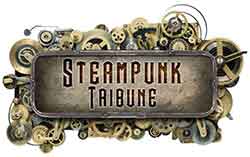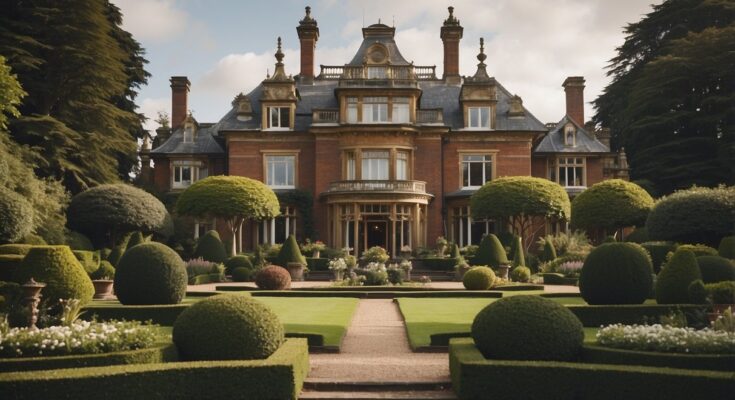The Edwardian era, spanning from 1901 to 1910, marked a period of significant social change and cultural evolution in England. Edwardian last names often reflect the lineage and heritage of the time, showcasing the influence of both the Victorian era and emerging modernity. Understanding these names provides insight into social structures, occupations, and regional origins prevalent during this fascinating transitional phase in English history.

Last names from the Edwardian period frequently include occupational names, indicating trades and professions, which were vital in the rapidly industrializing society. Many names have roots in earlier centuries, connecting directly to the customs and traditions established during the Victorian era, yet they began to evolve as society embraced new values and technologies.
As one explores the richness of Edwardian last names, the interplay of class, geography, and the historical context comes to life. This exploration not only enriches knowledge about individual families but also offers a broader understanding of the societal shifts that defined the Edwardian age.
Historical Context of Surnames

Surnames have a rich history, influenced by social, geographical, and historical factors. The transition from Victorian to Edwardian naming conventions reflects broader societal changes in England.
Origins and Evolution
Surnames originated during the Middle Ages, initially serving practical purposes to distinguish individuals within communities. Early surnames often derived from occupations, locations, or characteristics. For example, “Smith” related to metalworkers, while “Hill” indicated someone living near a hill.
The fixed use of surnames became prevalent by the 15th century, continuing to evolve through the following centuries. By the Victorian era, surnames often reflected technological advancements, social mobility, and colonial expansion. This period marked the establishment of many surnames that would resonate throughout the Edwardian era.
Differences Between Edwardian and Victorian Surnames
The Victorian era saw a number of surnames that reflected industrial changes and the growth of urban areas. Names derived from trades, like “Baker” or “Taylor,” were common during this time.
In contrast, the Edwardian period embraced a wider variety of surnames, often influenced by the arts, literature, and a more global perspective. The introduction of more diverse cultural surnames occurred as migration patterns changed. Many Edwardian names indicated a blending of tradition with modern influences, leading to an expansion in surname diversity.
Cultural and Social Influence

The Edwardian last names reflect the significant wealth disparities and social structures prevalent during this period. Surnames often indicated one’s occupation or social standing, highlighting the distinctions between various classes.
Impact of Wealth and Occupation
Wealth played a crucial role in defining Edwardian last names. Individuals from affluent families commonly bore surnames that indicated their lineage or estate, such as Cavendish or Fitzwilliam. These names often belonged to aristocratic or landed gentry classes, symbolizing prestige and historical significance.
On the other hand, many surnames were derived from occupations, such as Smith for metalworkers or Baker for bread makers. These names often belonged to the working class. The contrast between surnames rooted in wealth and those in trades illustrates the social hierarchies of the time.
Upper Class Versus Common Surnames
Upper-class surnames often convey a sense of heritage tied to land ownership and nobility. Names such as Devereux or Montgomery evoke the traditional aristocracy of England. These families frequently adhered to strict societal norms, reflecting their elevated status.
Common surnames, like Jones or Taylor, derive from everyday occupations and typically represent the broader working class. This contrast highlights how surnames functioned as social identifiers, revealing not only a family’s economic background but also their place within the community. This duality in naming conventions underscores the distinct societal divisions prominent in the Edwardian Era.
Geographic Distribution of Surnames
The distribution of Edwardian last names in England and Wales reflects the historical and geographical intricacies of the regions. Variants in surnames often correspond to specific locales, highlighting the influence of geography on naming conventions.
England and Wales
In England, surnames can be categorized based on their geographic origins. Common examples include Smith, prevalent in areas with historical metalwork industries, and Brown, which often indicates ties to ruddy or brown-haired individuals. Regions like Lancashire and Yorkshire have distinct surname characteristics, showing a rich tapestry of local influences.
In Wales, surnames often derive from patronymic traditions, where names such as Jones (from John) demonstrate lineage. The prevalence of ap or ab in Welsh surnames indicates “son of,” reflecting important familial connections. Regional clusters point to historical occupation patterns and social structures unique to Welsh society.
Regional Variants
Regional variants of surnames illustrate the local impact on naming. For instance, the surname Hughes is widely found in Wales and has strong associations with Hugh, a common given name in the region. In contrast, Taylor appears throughout England but may show variations, such as Tailor, depending on local dialects and linguistic shifts.
Other surname variations often arise from geographic markers. For example, Wilson may appear frequently in northern England but has local peculiarities that distinguish it from Southern variants like Wilkins. These distinctions highlight the complex interactions between language, culture, and geography that shape the landscape of surnames in these regions.
Common Edwardian Surnames
The Edwardian era, spanning from 1901 to 1910, saw a variety of surnames that reflected social status, occupation, and geographical origins. Understanding these last names provides insight into the culture and demographics of the period.
Top Surnames from the Edwardian Era
Some of the most common surnames during the Edwardian period included Smith, Jones, and Taylor. Smith, often associated with blacksmithing, was widespread due to the occupation’s prevalence.
Jones, a typical Welsh surname, highlighted regional identity and was particularly popular in England and Wales. Other notable names included Brown, Williams, and Davies.
These last names not only served as identifiers but also linked individuals to various professions and communities. The socio-economic status of families often influenced surname choice, reflecting lineage and heritage.
Rarity and Usage
While many surnames flourished during the Edwardian era, some were relatively rare. Names like Fitzwilliam and Hawthorne appeared less frequently, often belonging to specific regions or aristocratic families.
The use of these uncommon surnames could indicate a family’s historical significance or unique lineage. Understanding which names were prevalent or rare can help identify family heritage and social standing during this time.
Many surnames have persisted, while others have fallen out of common use, making historical records valuable for genealogy.
Characteristics of Edwardian Last Names
Edwardian last names display distinctive traits influenced by social norms, culture, and literature of the era. The use of nicknames and variants is prominent, along with numerous literary references that shaped these names.
Nicknames and Variants
During the Edwardian era, many last names evolved from common nicknames. This practice reflected the social dynamics of the time, allowing for greater personalization and familiarity.
For example, a surname like “Williams” could have variants such as “Will,” “Bill,” or “Billy.” These variations often signified familial bonds or social connections.
Additionally, the usage of diminutives and affectionate forms contributed to the fluidity of names. This trend was common among all social classes, making it a unique aspect of Edwardian identity.
Literary and Cultural References
Literature significantly influenced Edwardian last names. Prominent works from writers such as E.M. Forster and P.G. Wodehouse introduced names that resonated with the public.
Downton Abbey, a key cultural reference, brought attention to names emblematic of the period, such as “Crawley” and “Grantham.” These names not only represented the upper class but also conveyed particular traits associated with the characters.
Additionally, numerous last names have roots in literary works, capturing the spirit of the time. Many Edwardian names reflect the socio-economic conditions and values of the society, leaving a lasting imprint on subsequent generations.
Notable Figures and Families
The Edwardian era saw a significant impact from prominent figures and families, shaping the cultural and social landscape of the time. Family names during this period often reflected wealth, status, and historical significance.
Influence of Prominent Edwardians
Noteworthy individuals such as Edward VII greatly influenced naming conventions. The monarchical appeal of names like “Edward” became prevalent among the upper classes.
Thomas Johnson and William Williams represent families with deep roots in this period. Their contributions to society ranged from politics to arts, helping to establish the cultural identity of Edwardian England.
These names often signified lineage and status, leading many to adopt them in tribute or as a mark of social elevation. The prominence of individuals like these shaped the perceptions and choices surrounding last names during this time.
Family Names in Historical Records
Historical records from the Edwardian era reveal trends in family names that denote wealth and influence. Surnames like Johnson and Williams were common among the gentry and reflected occupations, locations, or ancestral ties.
The use of “son” in names hearkens back to historical practices, often indicating lineage. Such surnames were documented in various contexts, from land ownership to civic participation, highlighting their importance in societal hierarchy.
Several notable families, including the Williams, acquired significant estates, further cementing their surname’s legacy. The persistence of these names in public records stands as a testament to their historical significance and lasting impact on culture.
Revival and Modern Usage
Edwardian last names have seen a resurgence in contemporary culture, influencing various aspects of modern life, including naming conventions and creative storytelling. Their historical significance provides rich material for inspiration, especially in character development in media.
Edwardian Names in Contemporary Times
Many parents today are drawn to Edwardian names for their elegance and classic appeal. Names such as Wellington, Fitzgerald, and Beaumont evoke a sense of sophistication reflecting the Edwardian Era’s unique charm.
This revival is not limited to first names; many choose to incorporate these last names as a way to connect with heritage or simply for their vintage flair. Websites and social media platforms often highlight these choices, celebrating their historical roots while promoting their use in modern naming.
Additionally, some businesses are adopting Edwardian names to impart a sense of tradition and quality, particularly in sectors like fashion and hospitality.
Inspiration for Characters in Media
Edwardian last names provide a wealth of inspiration for characters in plays, movies, and literature. Writers often choose these names to convey a specific period or social class, enhancing the authenticity of their stories.
For example, names like Pemberton and Ashcombe suggest a backdrop of upper-class society, fitting for roles in period dramas. Many contemporary adaptations of classic literature also feature these names to connect audiences with the historical context of the characters.
In films such as Downton Abbey, Edwardian names play a critical role in shaping the narrative and character dynamics. This usage reaffirms the era’s lasting influence on modern storytelling and the arts.

